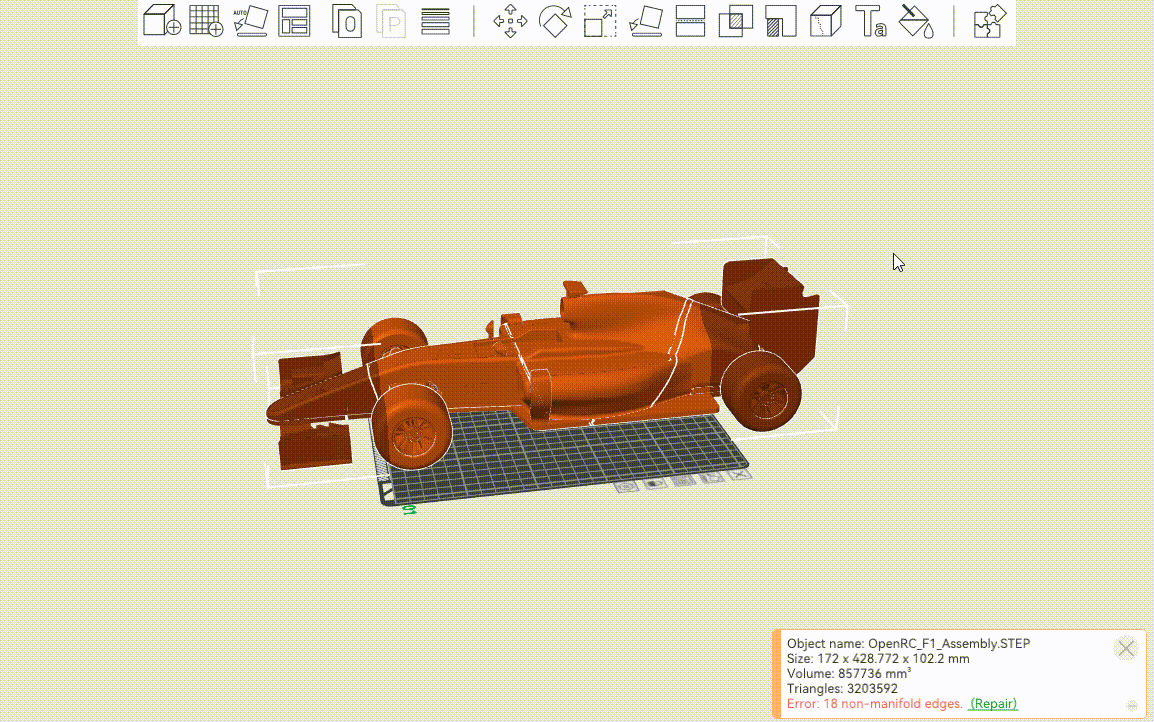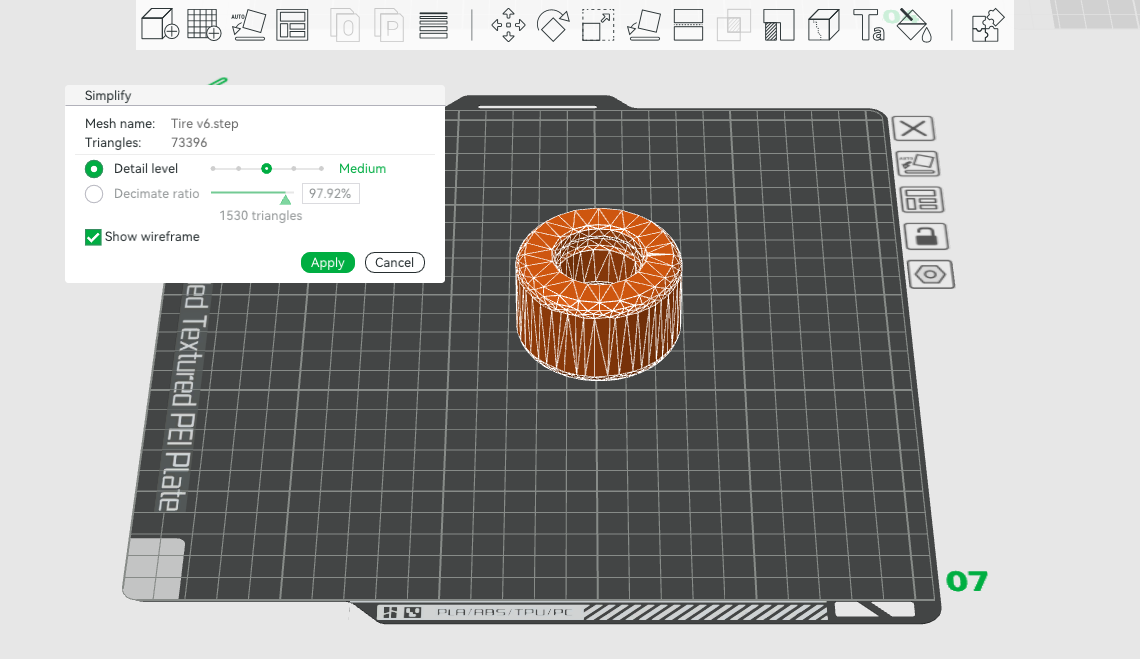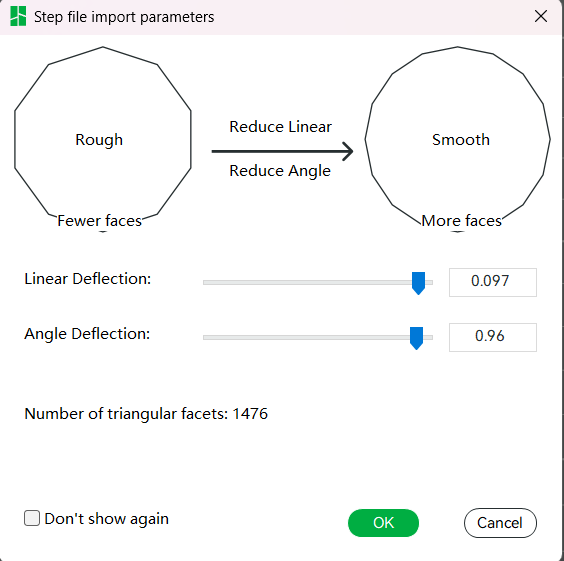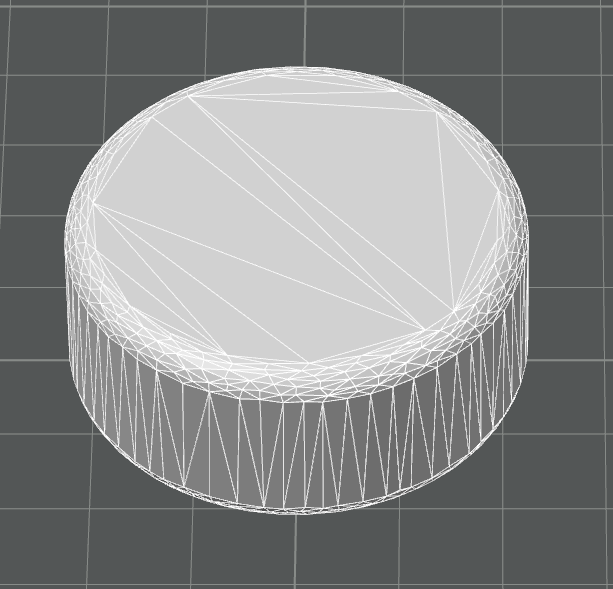STEP format is a kind of standard exchange format that is widely used in CAD software. Almost all CAD software can export models or assemblies expressed in STEP format. That means models in assembly can be combined and expressed easily in STEP files without accuracy loss.
Bambu Studio supports importing models and assembly from STEP files. And this is based on OpenCASCADE. So model designers don't need to export STL model files from CAD software, but can drag the STEP file into Bambu Studio directly to open it and slice. This brings about a lot of benefits and the most typical benefits are shown below.
¶ Assembly View
A large 3D model often consists of multiple parts and needs to be split. Splitting a model into objects helps us:
- Be able to print a model whose dimension exceeds the printer build volume
- Easy to print. Splitting the model into parts can make it much easier for printing.
- Be able to print a colorful model (some parts have different colors from other parts) even w/o an AMS
But it also has some drawbacks:
- Difficult to color parts because we cannot preview their overall appearance. It also happens when a user wants to change colors based on an existing 3mf project
- Do not know the position of each part in the final model.
Assembly View solves these pain points.

When importing the model by STEP file, Bambu Studio will automatically create its Assembly View, which remembers the relative position of each part.
If the model is split into multiple objects in Bambu Studio, its Assembly View will not change. You can switch to/from Assembly View for different operations. For example, you may switch to Assembly View for easy colorizing.
You can also explore the model as you wish to easily colorize the internal parts(if needed) and view the position of each part.
¶ More Arc Movement in G-code
3D models are mostly expressed as triangular mesh, which means that the final slicing and printing path are dense line segments. When the printer is slow, these dense paths have no obvious bad influence on print quality. But when the printing speed is high, a lot of transient impulse signals will be produced at the turning point of the segment, which brings about noise and vibration. In order to alleviate this problem, Bambu Slicer generates an arc path by fitting within a certain acceptable tolerance. This can reduce the number of turning points of segments and make the path more smooth, and reduce the vibration in a fast print. More details can be found in Acr move | Bambu Lab Wiki.
The STEP file saves models without accuracy loss. The original STEP file is the vector model, when importing the STEP file, Bambu Studio converts models into triangular mesh automatically according to a tolerance that is small than the half of default arc fitting tolerance. That is, it is converted into a high-precision STL model in Bambu Studio. Therefore, more outline details of the model can be reserved, so that more G2/G3 arc move G-code can be generated when slicing. As shown in the figure below, the STEP model imported into Bambu Studio contains a large number of triangular meshes:

¶ Adjust the Quality of the Imported
The quality of the imported STEP file can be adjusted through two parameters: "linear deflection" and "angle deflection". When the values of these two parameters are set smaller, the model import quality is higher, the surfaces are smoother, and the number of generated triangles increases. Consequently, the import time and slicing time will also increase.
If the "Don‘t show again" option is enabled, the dialog box will not appear the next time you import a STEP file. If you want to restore the display of this dialog box, go to the "Preferences" and enable the "Show the STEP mesh parameter setting dialog" option.



